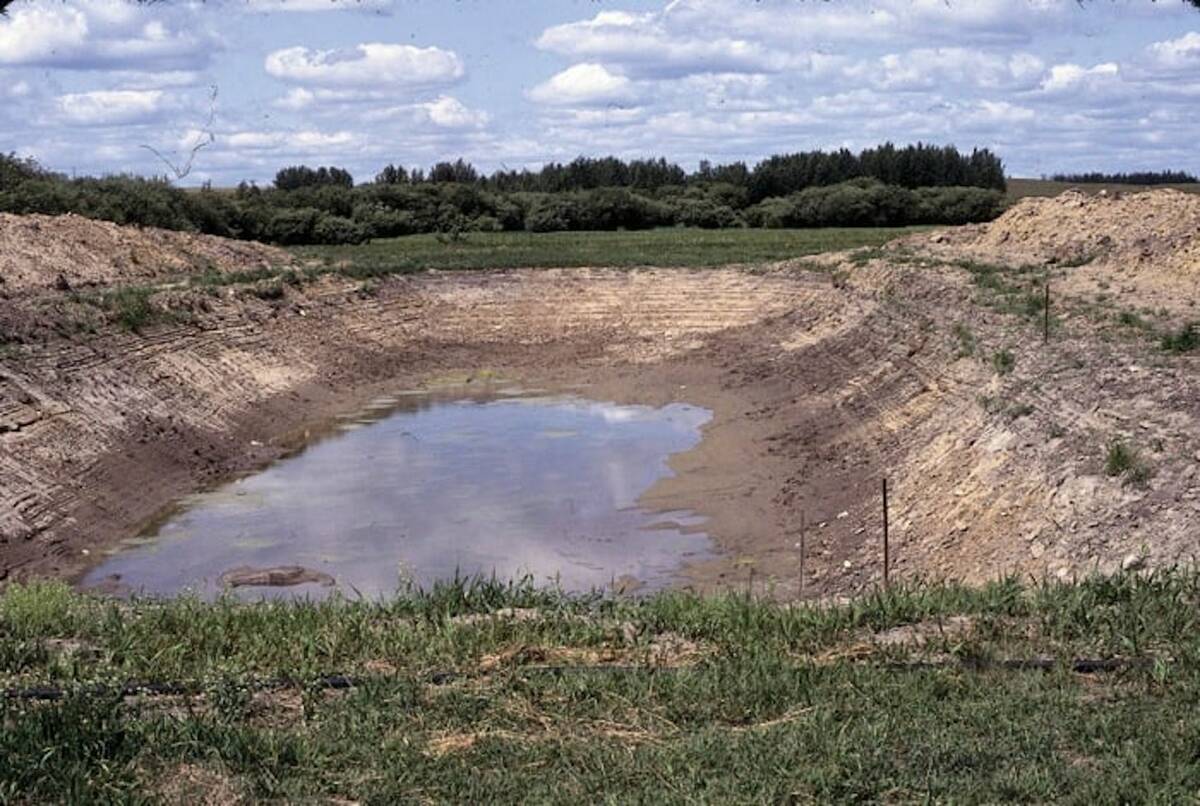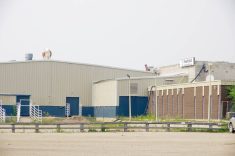RED DEER – Laminitis is a crippling lameness described by horse owners since 350 BC.
Early treatments involved bleeding several pints from the horse or feeding it concoctions of weasel skins, putrid eggs and vinegar.
It remains a troublesome condition for horses and their owners and may never be completely corrected, said Ilka Wagner of Texas.
She is in private practice and works with the Hoof Project Foundation, which provides expert advice on equine foot health.
Laminitis can be an expensive, difficult condition to treat, and horse owners may be presented with contradictory information on its management, she told a horse industry conference in Red Deer on Jan. 14.
Read Also

Dry summer conditions can lead to poor water quality for livestock
Drought conditions in the Prairies has led to an decrease in water quality, and producers are being advised to closely monitor water quality for their animals.
When standing, a horse with laminitis looks like it is leaning backward to take the weight off the front feet where the infection is usually found. When it walks, it looks like it is stepping on eggshells.
Laminitis causes damage to the lamellar tissues found between the hoof wall and coffin bone, also known as the third phalanx.
Lamellar tissue adheres the skeleton to the hoof wall. It contains blood and nerve supplies and can develop into a painful inflammation if it becomes damaged.
All feet may be infected and each one may look different in shape.
Causes include gastrointestinal upsets, diarrhea, grain overload, dehydration, difficult recovery from surgery, overwork on hard surfaces, long rides in trailers, retained placentas, excessive grazing on rich, lush pasture and poison from snake bites.
Laminitis includes four phases:
Developmental phase
This is the period from the time of the insult to the foot to the initial appearance of lameness, during which the owner may not notice a problem.
“You may not know what the insult was,” Wagner said.
“You come home and the horse is lame.”
Blood flow to the foot is restricted during this early stage, which probably causes numbness with no pain.
The phase can last up to 40 hours and is the optimum time for preventive medicine, as long as the owner knows the horse is in trouble.
A veterinarian can provide anti-inflammatory medication and treat the cause, whether it be colic or infection from a retained placenta.
Rest and confinement are important at this time, even if the horse seems better.
Acute phase
This stage is when the horse becomes lame and may last four hours to three days. The coffin bone may appear normal on a radiograph with no shifting of the bone from its normal position. There may be swelling in the inner tissues and sensitivity across the toe.
All four feet must be checked. They will also need support but this does not include corrective shoeing because the feet cannot tolerate being shod at this point.
Bed the horse on soft sand, shavings or peat moss to help it bear weight and maintain blood flow to the foot. Confine if possible.
The condition can progress to either the subacute or chronic phase at this point.
Subacute phase
This is the recovery period and Wagner recommends 60 days of stall rest with no turnout so the feet can heal.
“The more they stress those tissues, even in a small paddock running and playing around, the more likely they are to come out of the subacute phase to the chronic phase,” Wagner said.
Do not put on a regular keg shoe or A-bar shoe at this time. Horses need full sole support and if the foot is not supported they may enter the chronic phase period.
Chronic phase
Horses experience a collapse on the foot in this stage that could take months or years to heal. Some horses never recover properly.
In some cases the coffin bone may sink and rotate away from the hoof wall. Upon examination, the bone may be seen penetrating through the sole of the foot, which is referred to as sinking.
At one time it was believed horses should be euthanized if there was more than 11 percent rotation of the bone, but there have been many successful rehabilitations of horses even at this stage.
The foot bone may remodel itself so the horse can walk again. The vet and farrier need to work closely together to help realign the bones within the hoof capsule.
Get X-rays before the farrier starts to work.
Research shows laminitis goes beyond the foot and could lead to other problems requiring rehabilitation of joints and tendons. The horse may develop arthritis, and it is important to discover if pain is in the foot or the joints.
Good nutrition and care are helping horses live longer, which means they are more likely to experience health problems common among older animals, such as obesity, pre-diabetic syndrome or Cushing’s disease. These conditions can also affect the feet.
Other problems related to laminitis include equine metabolic syndrome, which is not age specific. The horse is obese and can suffer from an improperly functioning thyroid gland.
Horses with this condition have a thick, cresty neck, abnormal fat deposits on the body and problems with infertility.
Other horses are just fat and need to lose weight on a calorie reduced diet.
Cushing’s disease is another possibility, which is related to an improperly functioning pituitary gland. This is also called pituitary pas intermedia dysfunction, or PPID.
Owners may notice more hair around the jaw line and eventually a heavier, curly hair coat at the wrong time of year. Horses may experience muscle wasting and have a pendulous abdomen.
They may be lethargic, infertile and subject to chronic infections and often drink and urinate excessively.

















